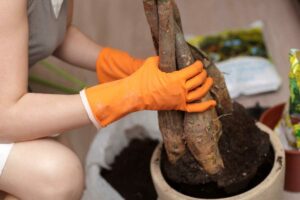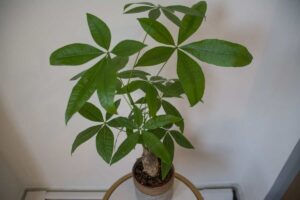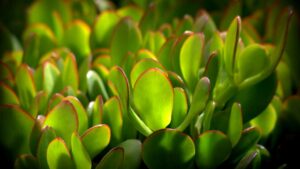Orchids are truly one of the most intriguing and diverse families of plants, boasting an incredible variety of sizes, shapes, colors, and fragrances.
In fact, they make up the largest family of flowering plants, with over 30,000 species and countless registered crosses.
As such, orchids have captivated the interest of horticulturists, scientists, and hobbyists alike for their fascinating history, ecology, and cultural significance.
These ancient yet ever-evolving plants have been around for a very long time, with the oldest known species dating back 112 million years.
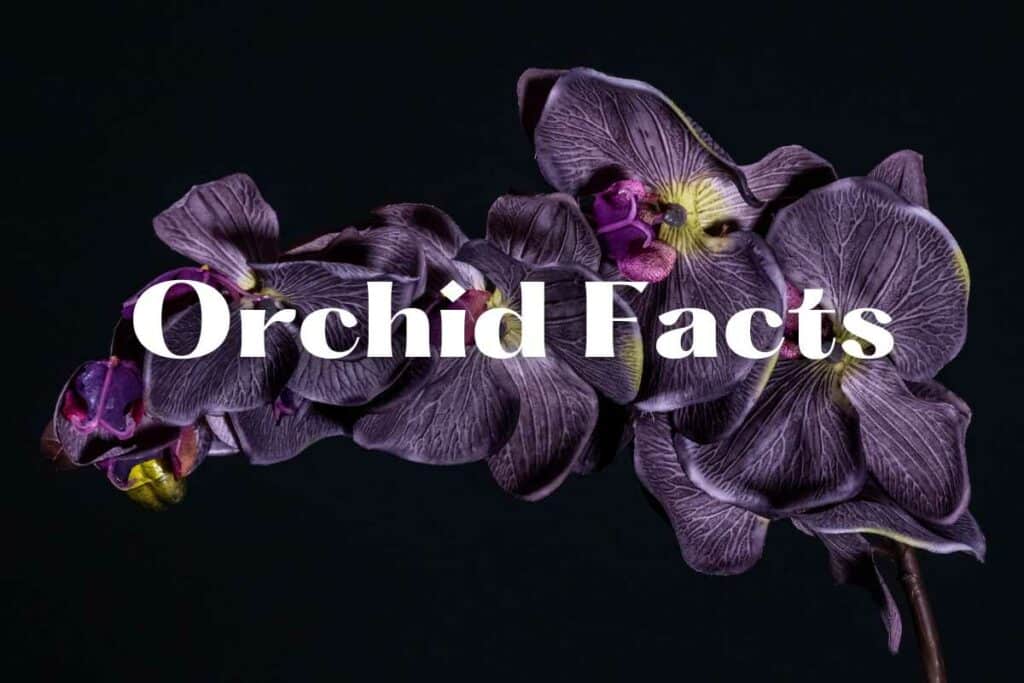
Found in regions from sea level to elevations of at least 4,600 meters (15,000 feet), the incredible adaptability of orchids means that they thrive in a vast array of habitats across the globe. This contributes to the remarkable diversity observed within this enchanting family of plants.
As we delve into the world of orchid facts, prepare to be amazed by the wealth of information and surprising secrets that these beautiful and resilient plants have to offer.
From their unique reproductive strategies to their status as harbingers of love, luxury, and mystery in various cultures, the orchid’s distinctive nature continues to charm and inspire us all.
Orchid Classification
Orchids are a diverse and fascinating group of plants that belong to the family Orchidaceae, a member of Asparagales, an order of monocotyledonous flowering plants that also includes the asparagus and iris families (Britannica).
Species
With an estimated 25,000 species and more than 100,000 hybrids, orchids are one of the largest and most diverse families of flowering plants (Wikipedia).
These plants are characterized by unique features, such as bilateral symmetry of the flowers, highly modified petals, fused stamens and carpels, and extremely small seeds.
Orchids have adapted to various natural habitats, from tropical rainforests to temperate grasslands and even arid deserts.

Hybrids
Orchid hybrids are created by crossing two or more different species, genera, or even families, resulting in new and diverse orchid plants.
Hybridization in orchids is a popular practice, and it has led to the creation of thousands of stunning and hardy hybrid varieties, with new ones being developed constantly.
Some of the most well-known orchid hybrids include Phalaenopsis, Cattleyas, Dendrobiums, and Oncidiums. They offer an incredible combination of color, patterns, and shapes, making them highly sought-after additions to any orchid collection.
Hybrid orchids often exhibit improved traits, such as enhanced flower size, color, and fragrance, as well as increased disease resistance and adaptability to various growing conditions.
Anatomy and Structure
Leaves
Orchids have various types of leaves, depending on their habitat and growth patterns.
Epiphytic orchids, which grow on trees, typically have thick, succulent leaves to store water, while terrestrial orchids, which grow on the ground, often have thinner leaves.
Some orchids even have specialized adaptations such as photosynthetic roots that allow them to survive without leaves.
Roots
The roots of orchids serve several functions, including anchoring the plant to its substrate and absorbing water and nutrients.
Epiphytic orchids often have aerial roots, which are green and covered in a spongy tissue called velamen, aiding in the absorption of water and nutrients from the air.
Terrestrial orchids, on the other hand, have underground roots that are more fibrous and similar to those of other plants.
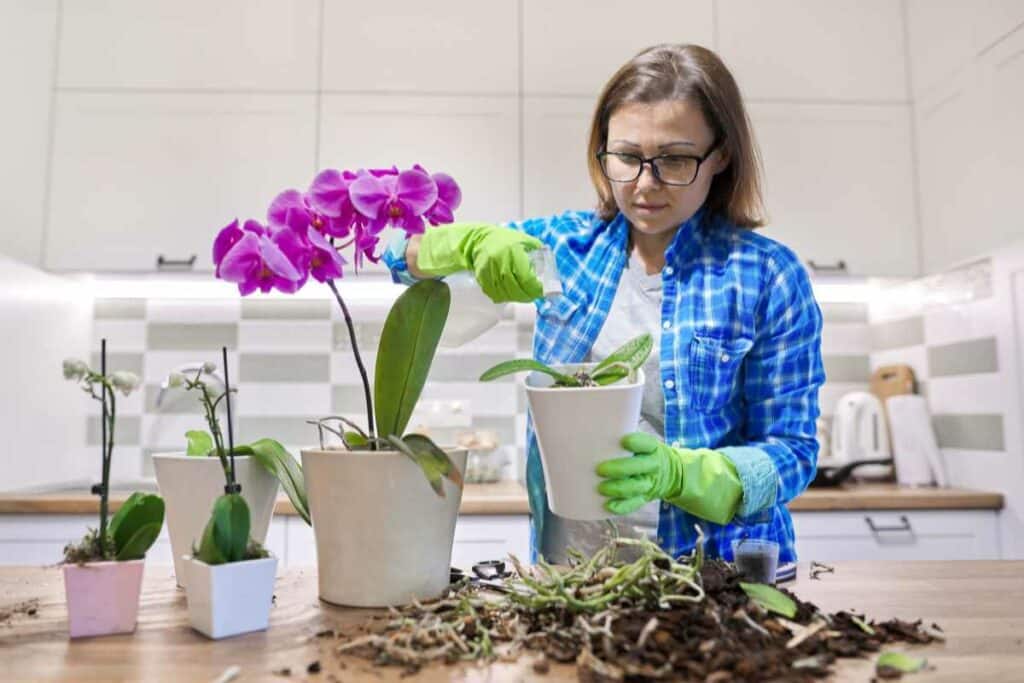
Flowers
Orchids are known for their unique and beautiful flower structures. The typical orchid flower has an outer whorl of three sepals and an inner whorl of three petals, with the middle petal called the lip or labellum (The Anatomy of an Orchid).
The lip often serves as a landing platform for pollinators and is very distinctive, varying in shape and color among different species.
The reproductive parts of orchids are also unique, as they have a specialized structure called the column, which combines the male and female organs into one structure (Structure of orchid flowers).
This adaptation helps to ensure successful pollination by causing the flower to release its pollen onto the pollinator as it attempts to feed from the flower.
Orchid Distribution and Habitat
Orchids are one of the most diverse and widespread plant families, with over 25,000 species and nearly 1,000 genera found across the globe.
These vibrant and attractive plants are distributed primarily in wet tropical climates, although some species are also adapted to northern and southern temperate zones. Notably, there are even a few orchid species reported to grow in areas north of the Arctic Circle[1].
Due to their adaptability, orchids can thrive in a variety of habitats, including rainforests, grasslands, and woodlands[2].
About 25% of all orchid species are terrestrial or ground orchids, which live in soil and are found in different habitat types, such as forest floors, grasslands, woodlands, or bogs.
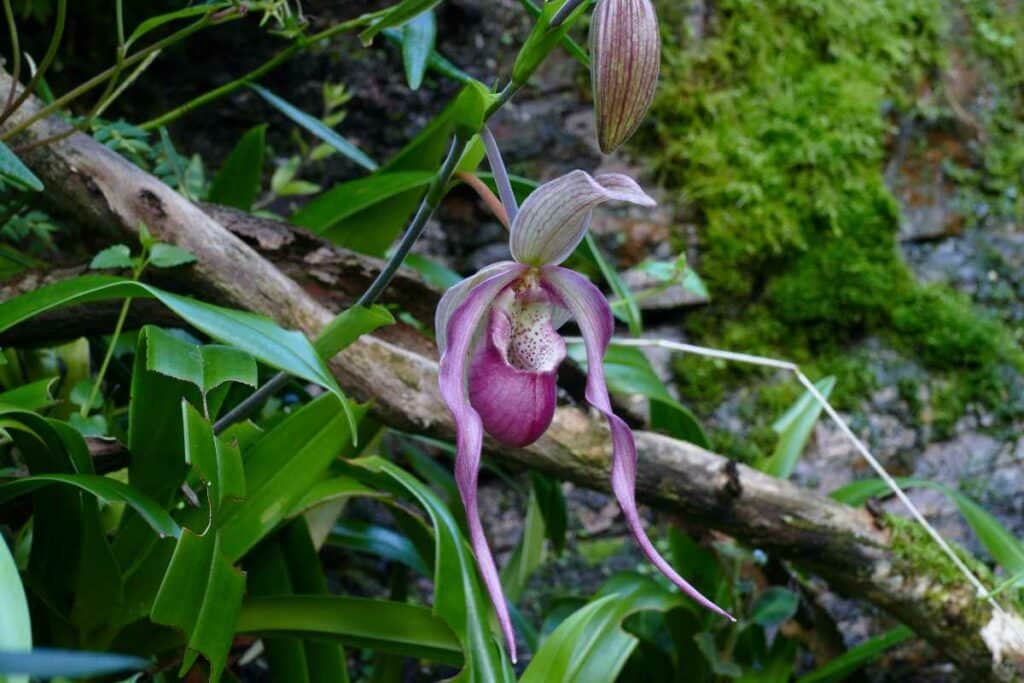
These plants possess underground tuberoids that store food reserves, allowing them to develop new shoots at the beginning of each growing season[2].
Orchids can grow in almost all climates, except for extremely frigid and arid environments. Some orchid groups are pantropical, which means they have the ability to grow in different tropical countries, while others are endemic and can only be found in specific countries or habitats[3].
Another interesting fact about orchid distribution is their relationship with mycorrhizal fungi. Orchid seeds require a symbiotic relationship with these fungi in order to germinate and establish themselves in their habitat.
This dynamic interaction plays a crucial role in the distribution, population, and ecological community construction of orchids[4].
Growth and Reproduction
Orchids are fascinating plants with unique growth patterns and reproduction methods. This section will discuss these aspects, focusing on pollination and seed germination.
Pollination
Orchids are known for their intricate pollination strategies. Many species have evolved to attract specific pollinators, such as bees, moths, or birds by mimicking their shapes, colors, and scents. Some orchids even release alluring fragrances to attract their desired pollinators.
Once the pollinator makes contact with the orchid flower, the plant’s pollen-containing structures, called pollinia, get attached to the pollinator, which then transfers the pollen to other flowers as it visits them, facilitating cross-pollination and increasing genetic diversity among orchid populations.
Seed Germination
After successful pollination, orchid seeds develop within the fruit, which is typically a capsule-like structure.
Orchid seeds are incredibly tiny, almost dust-like, and contain minimal nutrients to support germination. It is estimated that an orchid capsule can contain anywhere from 10,000 to several million seeds
For successful germination, orchid seeds often rely on a symbiotic relationship with specific fungi that provide the necessary nutrients.
When orchid seeds land on a suitable substrate, they form an interface with the fungal partner, which supplies them with nutrients and aids their development into new plants.
This process, known as mycorrhizal association, is essential for many orchid species to grow and survive in their natural habitats.
In cultivation, orchids can be propagated both sexually via seed germination and asexually through vegetative means, such as division or tissue culture.
However, reproducing orchids through seeds is more complex and requires sterile laboratory conditions to prevent contamination by unwanted fungi or bacteria.
Asexual propagation is more commonly practiced by hobbyists and commercial growers because it is easier to perform and often results in cloned plants with predictable traits.
Cultivation and Care
Temperature
Orchids are native to various climates, but most cultivated species come from the tropics. As a result, they prefer warmer temperatures, generally between 60-80°F (15-27°C).
However, some species may require cooler or warmer conditions, so it’s crucial to research the specific temperature requirements of your orchid.
Watering
Proper watering is essential for healthy orchids. The frequency and quantity of water required depend on factors such as humidity, orchid type, and potting medium.
Orchids should be watered just as they dry out, with no set schedule, as mentioned by the American Orchid Society. It is crucial not to overwater your orchids, as this can lead to root rot and other issues.
The biggest mistake gardeners make with orchids is Over-Watering them!
Fertilization
Orchids benefit from regular fertilization to promote growth and blooming. It’s generally recommended to use a balanced, water-soluble fertilizer at a quarter of the recommended strength.
Apply the fertilizer every two weeks during the orchid’s growth phase, then reduce to once a month during its dormant period. It’s essential to flush the pot with water between feedings to prevent nutrient buildup.

Potting and Repotting
Choosing the appropriate pot and potting medium is essential for orchids. Many orchids require a well-draining mix, such as bark or sphagnum moss.
The pot size should be determined based on the orchid’s root system, with just enough room for growth, as described by The Old Farmer’s Almanac.
Repotting is necessary when your orchid outgrows its pot or when the potting medium breaks down. It’s usually done every two to three years.
These pots sold on AMAZON are perfect for Orchids – Click here for prices
Carefully remove the orchid from its pot, trim away any dead or rotten roots, and place it in the new pot with fresh potting mix. Be gentle during repotting, as orchid roots are delicate and can be easily damaged.
Popular Orchid Varieties
With a vast number of species, it’s not surprising that some orchid varieties stand out as popular choices for growers and enthusiasts.
In this section, we’ll discuss a few of the most popular orchid varieties.
One of the best-known orchid species is the Phalaenopsis, also called the Moth Orchid. These orchids are beloved for their elegant, long-lasting blooms and their ability to thrive in household environments. Their blooms come in a range of colors including white, pink, and purple.
Cattleya orchids, often referred to as the “Queen of Orchids,” are another popular choice. These orchids are known for their large, showy flowers with a captivating fragrance.
Cattleya orchids are often used in corsages and floral arrangements due to their stunning appearance and long-lasting blooms.
Dendrobium orchids are another favored variety, with more than 1,000 species within the genus. These orchids are known for their diverse appearance, as they come in various sizes, shapes, and colors.
Dendrobium orchids are generally easy to care for, making them a popular choice for both beginners and experienced growers.
Lastly, the Oncidium genus offers a broad variety of orchids, commonly referred to as the “Dancing Lady” orchids.
Known for their unique, delicate flowers that resemble dancing ladies, Oncidium orchids are prized for their striking appearance and ability to produce multiple blooms on a single spike.
These are just a few examples of the many popular orchid varieties available to growers and enthusiasts.
Each one offers its unique charm, beauty, and growing requirements, making the world of orchids an exciting and diverse realm to explore.
Orchids in Culture and Symbolism
Orchids have captivated people’s imagination and played a significant role in various cultures throughout history. In Ancient Greece, orchids were believed to be symbols of fertility and virility due to their tubers, which were thought to contain a potion for love and procreation Floraly.
Orchids have also been admired in Asia for their beauty and fragrance. In China, they are often associated with virtue, refinement, nobility, and friendship.
The Chinese appreciate the delicate balance between strength and grace that orchids embody, which aligns with their principles of harmony and balance.
When it comes to love, romance, sex, and fertility, many cultures have strong associations with orchids too Mind Body Green.
In contemporary Western culture, the orchid represents luxury, love, and beauty, making it a popular choice for weddings and other romantic occasions 1-800-Flowers.com.
Here are some interesting examples of how orchids have been regarded in different cultures:
- Aztec: In Aztec culture, they valued the vanilla orchid for its aroma and flavor, using it to create a divine beverage mixed with chocolate Orchid Resource Center.
- Japanese: Orchids are often depicted in traditional Ikebana floral arrangements, signifying the beauty of nature.
- Victorian: In Victorian England, orchids were considered exotic and rare, symbolizing wealth, elegance, and status. Collecting and cultivating orchids was a pastime for high society.
In addition to their symbolic significance, orchids have also been used for medicinal purposes in traditional cultures around the world. Their natural elegance and wide array of colors and shapes have solidified their position as one of the world’s most adored flowers.
11 Quick Fire Orchid Facts
Orchids are fascinating plants with many interesting characteristics. Here are 11 facts about orchids that can be used in a quiz:
- Orchids are one of the largest and most diverse families of flowering plants, with over 25,000 species and more than 100,000 hybrids.
- Most orchids are native to tropical regions, but they can be found on every continent except Antarctica.
- These flowers have an unusual reproductive system, where they have a specialized lip called the labellum that plays a role in attracting pollinators.
- Orchid seeds are incredibly small, almost like dust particles. They require a partnership with fungi to germinate and grow.
- Orchids have unique roots called aerial roots, which allow them to absorb moisture and nutrients directly from the air.
- Some orchids have evolved to mimic the appearance and scent of female insects, thereby tricking male insects into attempting to mate with the flowers, and in the process, pollinating them.
- There is an orchid called the “corpse flower,” which releases a strong fragrance that smells like rotting meat to attract pollinating insects.
- Orchids can live for a very long time, with some species known to survive and bloom for more than 100 years.
- Vanilla, a popular flavoring derived from the vanilla orchid, is the only commercially grown orchid product in the world.
- Orchids are often seen as a symbol of love, luxury, and beauty due to their stunning appearance and rarity in the wild.
- The word “orchid” comes from the Greek word “orchis,” which means testicle, because the plant’s roots resemble the male reproductive organ.
These orchid facts offer a glimpse into the wonderful world of these exotic and intriguing flowers. Consider using these facts for a fun and educational quiz to share with friends or fellow orchid enthusiasts.
Final Thoughts
Orchids are a fascinating group of plants with an expansive variety of species, boasting over 20,000 different types found throughout the world. Their unique beauty and intriguing characteristics make them a popular choice for both novice and expert gardeners alike.
With a wide array of species available, orchids can be found in various hardiness zones, making them either annual, biennial, or perennial plants.
Interestingly, some varieties are even edible, providing a source of vitamin C and a unique culinary experience, as stated in The World of Herbs and Spices.
Delving into the world of orchids can be a rewarding journey. Their striking aesthetics, versatile nature, and captivating history make these vibrant flowers a cherished addition to any garden or floral arrangement.
- Philodendron Moonlight Vs. Golden Goddess
- How to Revive Your Rubber Plant: 6 Tips to Help Your Rubber Tree Thrive Again
- Your Money Tree Lost All Its Leaves – Will It Sprout Again?
- Why Is My Money Tree Dying? 5 Possible Reasons and Solutions
- Do Jade Plants Bloom – Fact or Fiction?
- Plants with Heart Shaped Leaves (Secret Language of Leaves)


